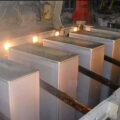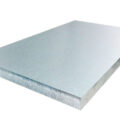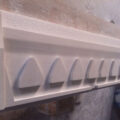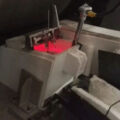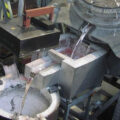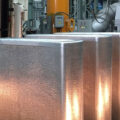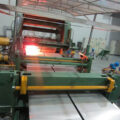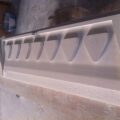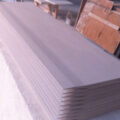In the casting tip and nozzle cavity, not only the phenomenon of reaction dross, but also the deposition of fine inclusions in the melt. When the casting speed of the continuous casting and rolling process reaches 7 m/min, the flow field inside the casting tip and nozzle cavity becomes more complicated with the increase of the casting speed, and the inclusion particles in the melt undergo physical movement and collision due to the force. The inside of the nozzle material is made up of intertwined fibers with many holes. The reaction caused the uneven surface of the nozzle and the existence of its own pores, so that the surface of the nozzle has a larger specific surface area and a higher adsorption energy, and has a strong ability to intercept non-metallic solid inclusions in the melt. At the same time, the tiny TiB2 particles in the refiner added in the continuous casting and rolling process will be intercepted by the inclusions on the nozzle. This will not only affect the grain refinement of the final aluminum cast plate, but also aggravate the blockage of the casting nozzle.
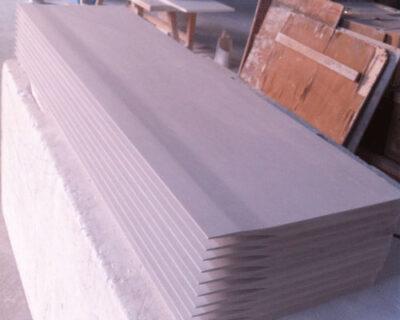
The increase in the roughness and specific surface area of the cavity caused by reaction in the nozzle cavity and slagging promotes the solidification of the liquid aluminum alloy on the inner surface of the nozzle cavity, which further causes the nozzle cavity to become narrow. At the same time, due to the solidification phenomenon of aluminum alloy, the bonding strength between the inclusions and between the inclusions and the nozzle material increases. The high-speed flow of aluminum alloy fluid in the continuous casting and rolling process makes it difficult to control the erosion in the nozzle cavity. The dross causes an effective impact, thus making the process prone to clogging of the casting nozzle.
The content of Mg in the AA8011 aluminum alloy is extremely small, but the slag on the surface of the casting nozzle has a mass fraction of 0. 4% Mg, and there are also Mg elements in the strip-shaped black slag generated on the aluminum alloy casting plate during the production process. The spinel and magnesia olivine formed by Mg and MgO and Al during the continuous casting and rolling process lead to aggravated blockage of the casting nozzle. Therefore, the content of impurity elements in the melt needs to be strictly controlled during the production process. AdTech offers refining flux, degassing unit and ceramic foam filter filtering equipment for molten aluminum purification.

